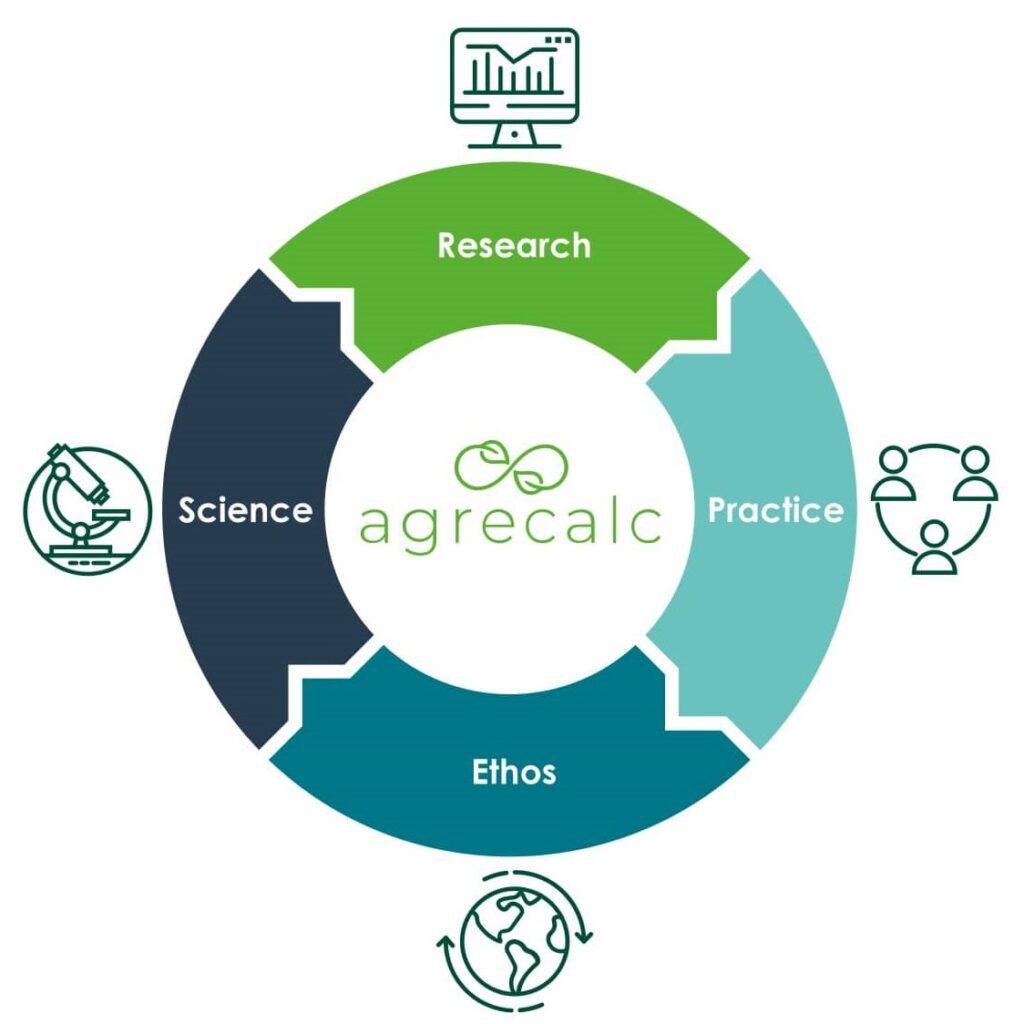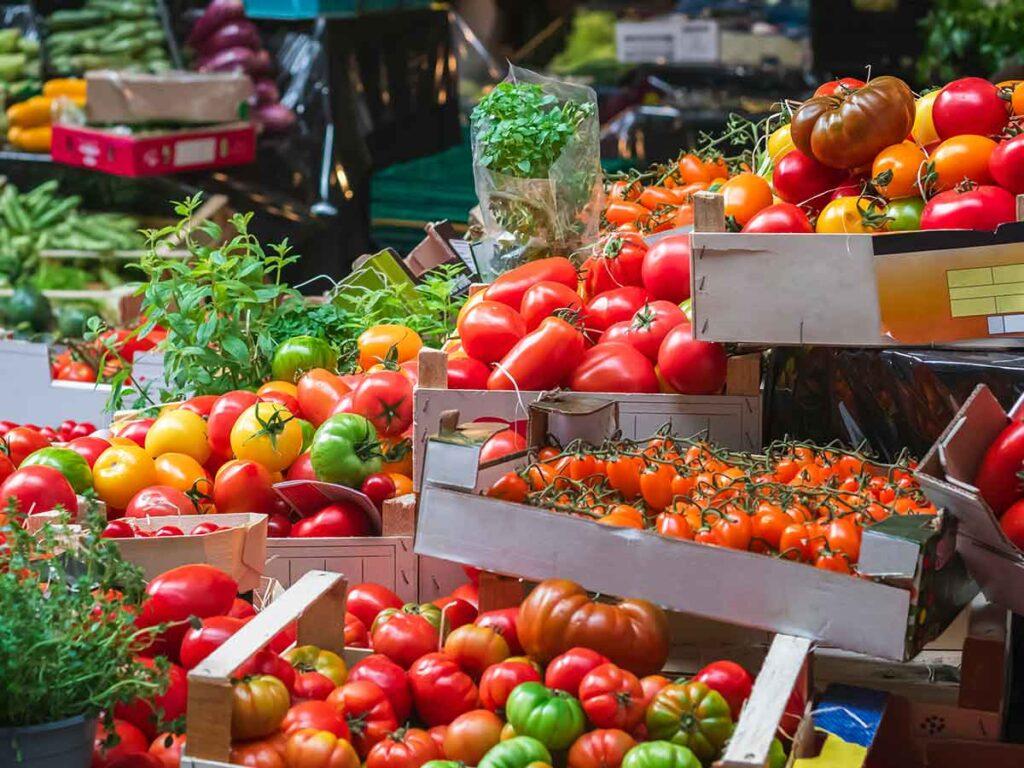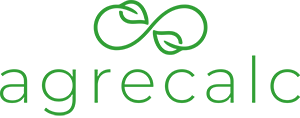Why use Agrecalc?
- Help your clients navigate their sustainability journey through careful calculation of resource use.
- Support your clients in discovering emission hotspots and resource-draining areas on their farm, and turn them around into cost savings and business profitability.
- Use the Agrecalc advanced benchmarking capabilities to compare your client’s farms against best and worst performing businesses and enterprises, obtaining visibility of the scope for improvement.
- Tailor the mitigation options with the help of scientifically-backed data, and provide an audit trail for future compliance requests.
- Guide your clients towards improving the business resilience against climate and economical shocks (e.g. raise in fertiliser prices).
Who are we?
- Agrecalc is team of agricultural professionals, environmental scientists and technical developers on a mission to provide clarity and confidence when it comes to GHG emissions.
- Agrecalc is a Resource Use Calculator, created by Consultants for Consultants. We have 17+ years of experience in calculating carbon footprint and are backed by cutting-edge science and research at SRUC and practical knowledge of SAC Consultants.
- We are supporting the transition to low-carbon agriculture, whilst increasing production efficiency.
Agrecalc is a farm carbon footprint tool designed to:
- Identify the main sources of carbon emissions (CO2 – from fossil fuels; CH4 – from ruminant digestion and manures; N2O – from fertiliser application).
- Measure those emissions and monitor improvements year after year – the lower the emissions, the more efficient the farm.
- Benchmark key performance indicators / relevant comparators, understanding that every farm is an ecosystem of its own, and that there’s no one-size-fit-all solution.
- Account for sequestration – woodland, hedgerows, soil carbon and biodiverse habitats.

What does Agrecalc do?
- Calculates whole farm emissions, emissions per kg of output and per enterprise.
- Suitable for mixed farms and all enterprises.
- Livestock calculations are aligned with the current IPCC Tier II methodology and tried and tested during 17 years of experience.
- Provides consultants with access to validated benchmarks.
- Option for data and results to be validated by experienced consultants.
- Agrecalc has proven itself in many government programmes, as well as partnerships with processors and retailers.
- With a Portal feature that allows a single point of access, you can see all your organisation’s farms, or clients’ farms simultaneously from each of their logins.
- Easy to read and easy to explain Reports, with both graphical data visualisation and a tabular view.
- Agrecalc adheres to IPCC (2019) and PAS 2050:11 supply chain standards and draws upon internationally recognised feed. databases (e.g., GFLI).
- Option to be trained on the software by experts who either designed the tool, or have extensive user experience.
What's in it for my client?
When your clients understand their own carbon baseline and you tailor the mitigation options to their business, you can support them with:
Securing Government support:
Completed and repeated carbon assessments allow your clients to secure grants and subsidies. With possibly mandated audits on the horizon, having these reports ready give your client advantages when it comes to participation in schemes and programmes. A year-on-year comparison allows for a clear audit trail and proof of commitment to improvement.
Securing markets and premiums:
With increased pressure on retailers to deliver emission reduction requirements, Agrecalc carbon assessment enables farmers to secure markets and obtain potential premiums for farm products. It also answers to the consumer demand for low-carbon produce.
Reducing input use and cost:
Mapping the business’ use of inputs allows to compare efficiency with others. You can identify costly hot spots where savings can be made, leading to improved profitability of the business.

Who is asking for farm carbon audits?
Governments
- Redirecting agricultural subsidies towards low carbon approaches.
- Implementing legislation to drive lower carbon emissions.
- Putting pressure on wider economy and retail sectors to cut emissions.
Processors and retailers
- Seeking suppliers and farmers to help them deliver low carbon / net zero products to consumers.
- Looking to change perception of their companies in the eyes of the consumer.
Farmers
- Seeing the benefit of commercial / market advantage.
- Understanding the effect of the mitigation measures suggested.
- Wanting to apply the cost savings and enable the financial support in the form of loans and other financial services.
What does the future hold?
Agrecalc Cloud, released in July 2023, includes:
Multiple flocks / herds
Fertiliser inhibitors
Expanded feed / fertiliser list
Transferred manures
Enhanced pig / poultry inputs
3NOP feed additive
Anaerobic digestion of manures
GWP*
Enhanced reporting
Further releases in 2024 will involve:
Migration of all users
Revised soil carbon module
Agroforestry
Tier 2 peatland
Tier 2 woodland
API – inputs and outputs
Expanded Scope 1 / 2 / 3 reporting
Deer / dairy sheep / goats
Nutrient management module
and much more!
Where can I find out more?
Feel free to browse the website or contact us via the Contact page.
- Read how a Highland farmer lowered his per-kilo-of-output carbon footprint by nearly a third in our Edinvale case study.
- As part of the PRISM2030 programme, a Somerset family farm benefited from using Agrecalc to identify improvements and allow for practical recommendations.
- An award-winning UK dairy producer, Grosvenor Farms Limited, achieved an average of 16% reduction in carbon emissions over four years.
- In Herefordshire, 4R Reassurance had a huge success in benchmarking the county’s fruit producers, as well as mixed farms.
- A family farm in Dorset also participated in PRISM2030, starting a journey with herbal leys to improve their grassland management.
- Under the Beef Efficiency Scheme, Agrecalc has provided carbon calculations for around 1,350 beef farmers, with the support of SAC Consultants. Three of their stories can be found on this page.
Download our newest brochure: Agrecalc Cloud – the carbon and resource efficiency leader.
